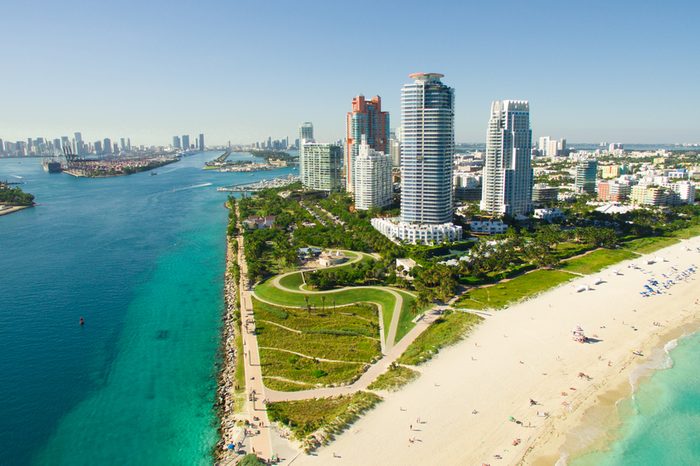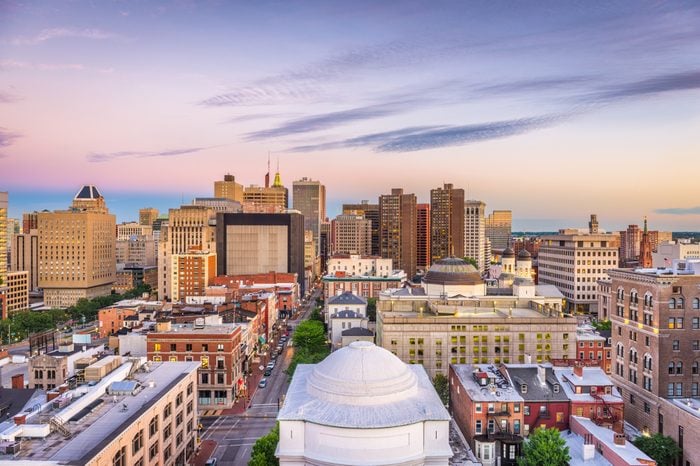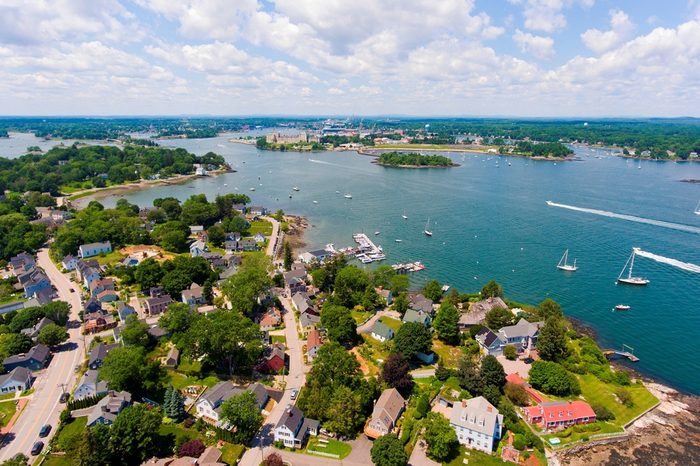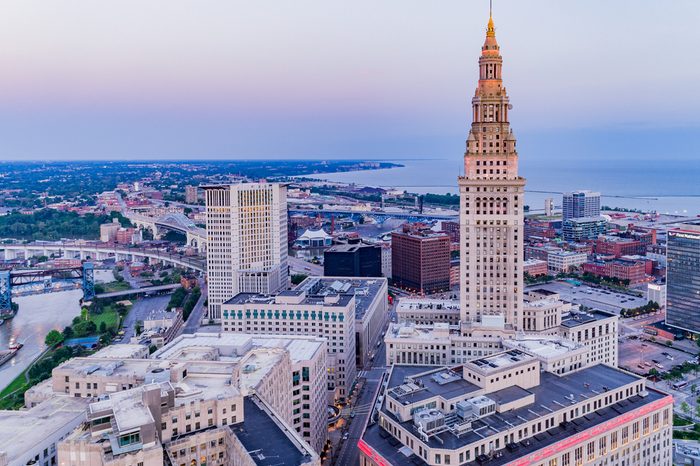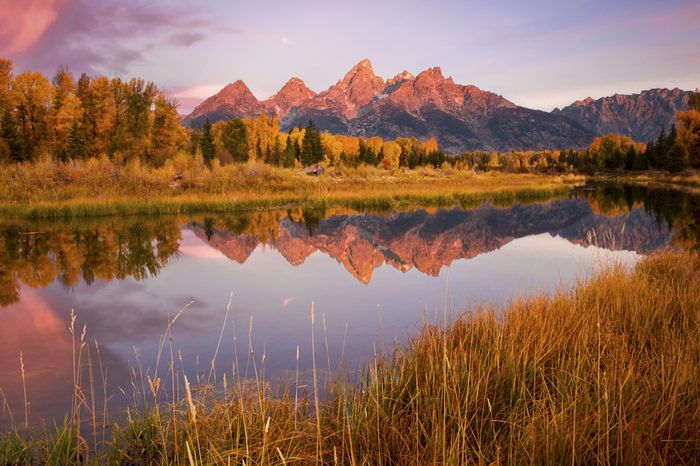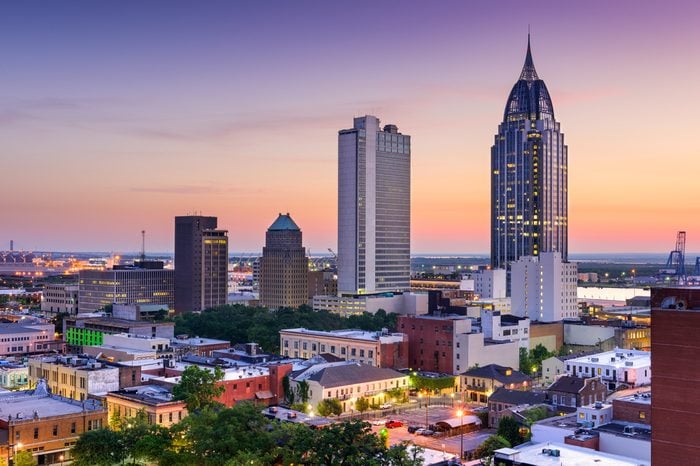
Alabama: Land of vegetarians?
The state of Alabama is named after the river which European explorers named after a local Native American tribe, according to the Alabama Department of Archives and History. Historians believe the tribe name is a portmanteau combining Alba (vegetation) and Amo (gatherer), which makes sense since Native Americans cleared a lot of the land in the state to grow vegetables. While the origin is debatable, here is a fun fact about Alabama: It’s the only state whose official drink is an alcoholic beverage.
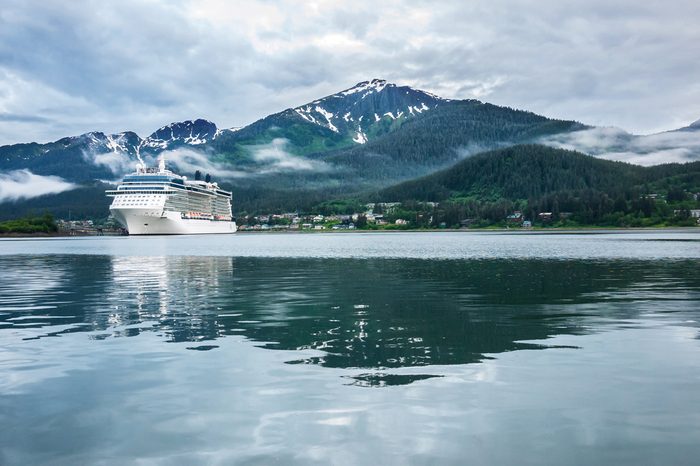
Alaska: A great land
The Russians sold Alaska to the United States in 1867. The name is sometimes loosely translated from the Aleut word “Alyeska” meaning “great land,” which is understandable because the state is bigger than Texas, California, and Montana combined. These days, Alaska’s willing to pay you $1,000 to move—and stay—there.
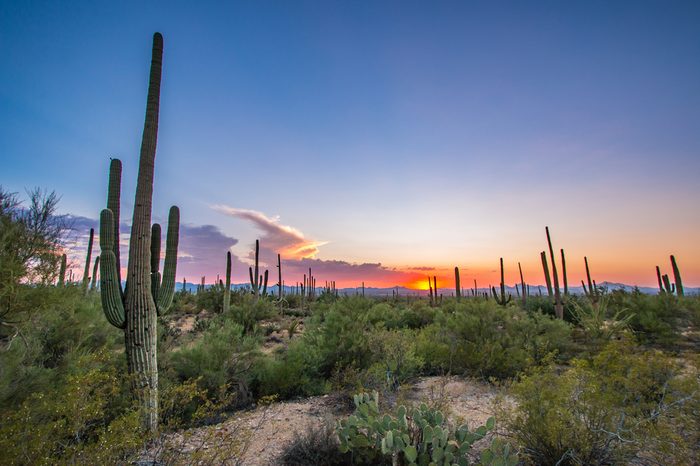
Arizona: A little spring or a big oak?
Historians disagree over how Arizona got its name: One theory is that the name is derived from Papago tribal words meaning “place of the young spring.” Another theory is that the name derives from a Spanish word meaning “good oak tree.” The office of the governor notes that the written history of Arizona began in Spanish (when exploration parties ventured northward from Mexico).
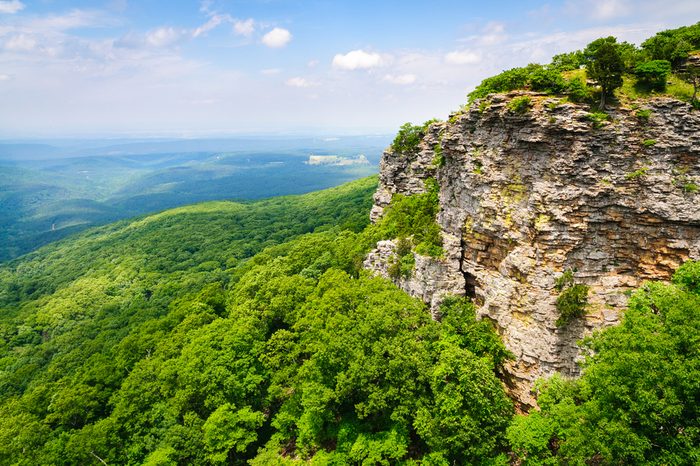
Arkansas: South wind
The state of Arkansas was named after a Native American tribe the Akana. “Arkansas” means “south wind” (i.e., “downstream”)—the tribe lived downstream from the major Algonquin tribe in the area. It stuck, at least in theory, although the spelling and pronunciation varied until well into the 19th century when the state passed a law declaring the spelling to be “Arkansas” but the pronunciation to be AR-can-saw. Contrary to Internet folklore, there is no penalty or other legal liability for misspelling or mispronouncing the state’s name, but there are some weird things that are actually banned in the United States.
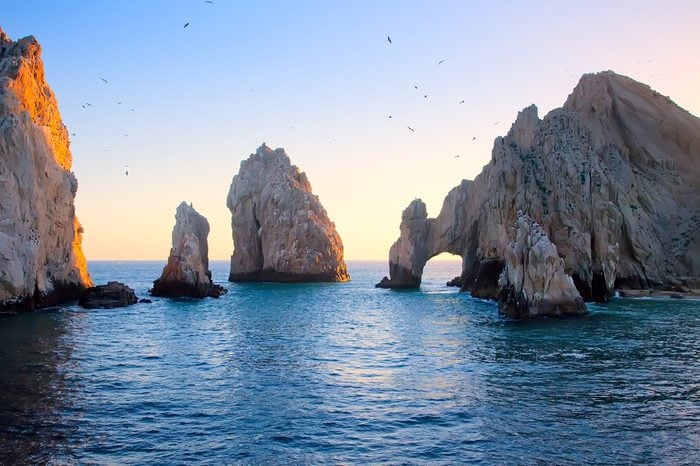
California: Not an island
The name comes from the Spanish legend of Queen Califa, ruler of an island called “California” (yes, the early explorers thought they were on an island). When Cortéz landed on Baja California, he believed he had found the island of Queen Califa, populated only by women who used gold to make tools and weapons. He wasn’t far wrong when, three centuries later, gold was discovered in California.
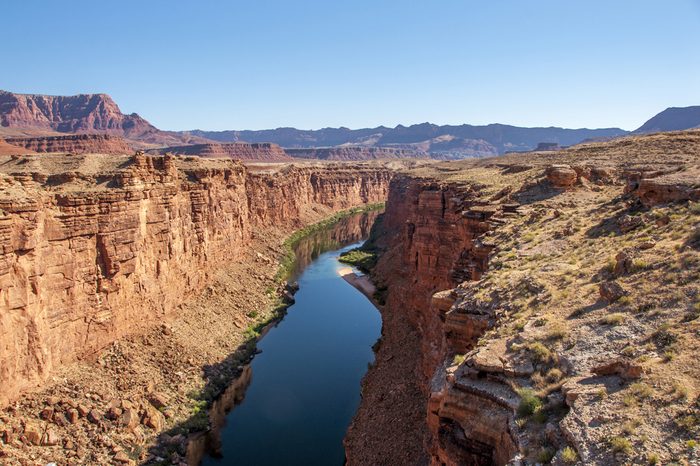
Colorado: The red river
Colorado means “the color red,” and Spanish explorers named the muddy red river they found Rio Colorado. Congress chose the name for the territory in 1861.
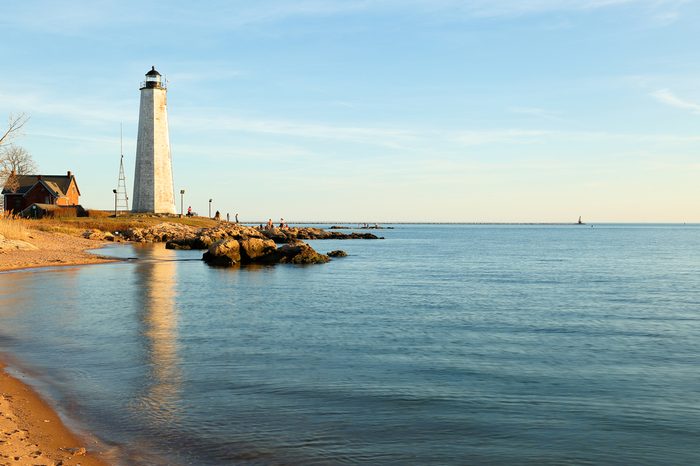
Connecticut: Not because of the Constitution
The founding fathers began drafting the U.S. Constitution in the state, but that has nothing to do with the name. By the 1600s, what is now the Connecticut River was already known by a derivation of the Native American word, quinnehtukqut, which means “long tidal river.” Did you know that one of Connecticut’s nicknames is the Nutmeg State?
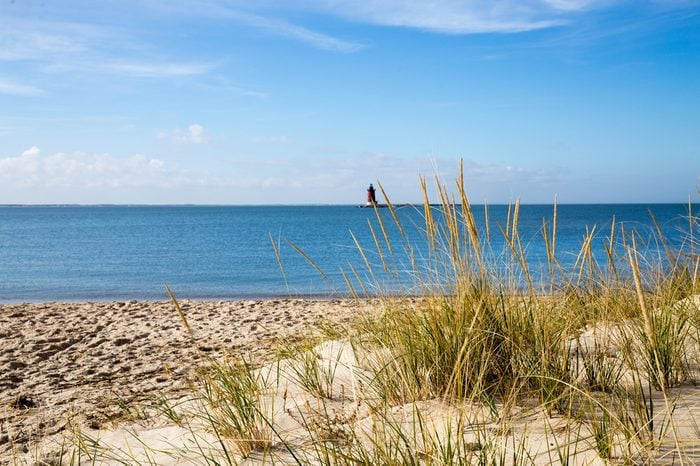
Delaware: The first state
Delaware got its name way back in 1610 when explorer Samuel Argall, sailing from Virginia, saw what is now Cape Henlopen and called it “Cape De La Warr” in tribute to the first governor of Virginia, Thomas West, who was also the 3rd Baron De La Warr. Here are more history lessons your teacher lied to you about.
Florida: Feast of the flowers
Juan Ponce de Leon was the first to call the state Florida when he landed in the northeastern part in April 1513. The name comes from the celebration, Pascua Florida (Feast of the Flowers). He never found that “fountain of youth” he was looking for, but some still believe it could be somewhere in Florida. Test the rest of your history knowledge with these history questions everyone always gets wrong.
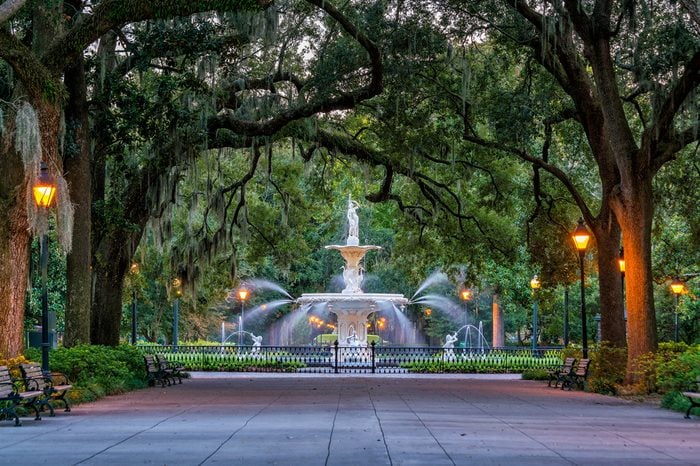
Georgia: For the other King George
Georgia was named by the Royal Charter in 1732 after England’s King George II. King George II demanded that the thirteenth colony (which later became the state of Georgia) be named after him.
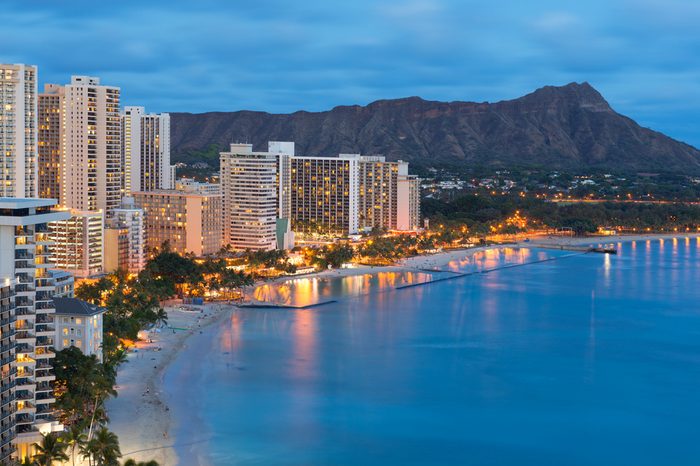
Hawaii: Small but fierce
When Captain James Cook discovered the islands that are now Hawaii in 1778, he wanted the islands to be called the Sandwich Islands, after the Earl of Sandwich. But Hawaiian King Kamehameha I wasn’t buying into the anglicized naming; he united the islands under his rule by 1819 as the Kingdom of Hawaii. Like many state names, the etymology of Hawaii is subject to debate. Some say believe it means “homeland.” Others say it means “small and raging.” Others say it comes from the traditional settler of the islands, Hawai’iloa.
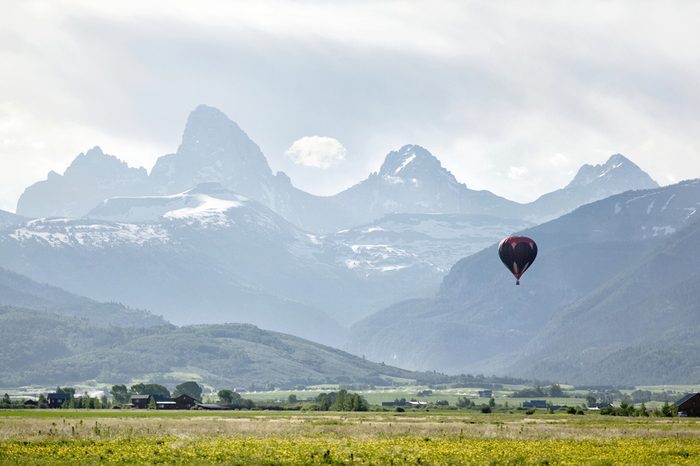
Idaho: Ida-hoax
While it may sound like a Native American-derived name, Idaho may be entirely made up. A mining lobbyist claimed it was an Indian word that meant “gem of the mountains,” and hoped to name the territory that included Colorado accordingly. When Congress caught onto the fact that Idaho wasn’t actually an Indian word at all, they went with Colorado. That left “Idaho” free for the taking—and now it had a reputation. And in 1863, Congress dubbed the state territory Idaho.
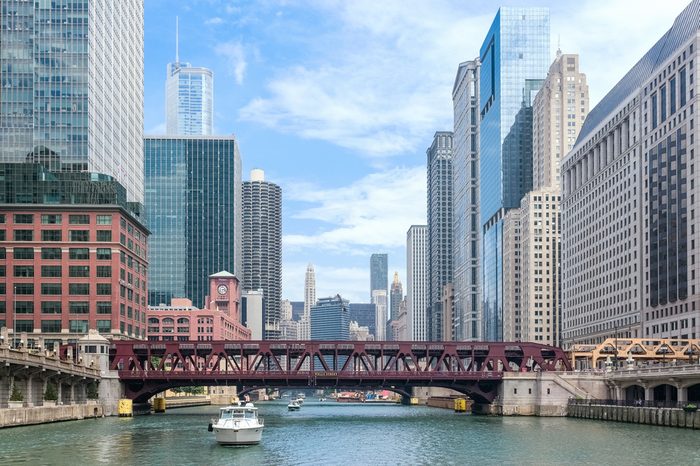
Illinois: The French pronunciation
If you were to pronounce “Illinois” using French pronunciation rules, it would sound something like Ill-in-WAH. That’s the key to understanding why Illinois is spelled that way—despite being pronounced Ill-in-OY. When French explorer Robert Cavelier, Sieur de La Salle discovered the land, he called it by the name of the Native American tribe in the area: the Illiniwok. He spelled it “Illinois,” as the French would. That’s the name Congress chose in 1818, but with a pronunciation that was decidedly not French. As for why Chicago is known as the “Windy City,” let’s just say the French weren’t clever enough to come up with that nickname.
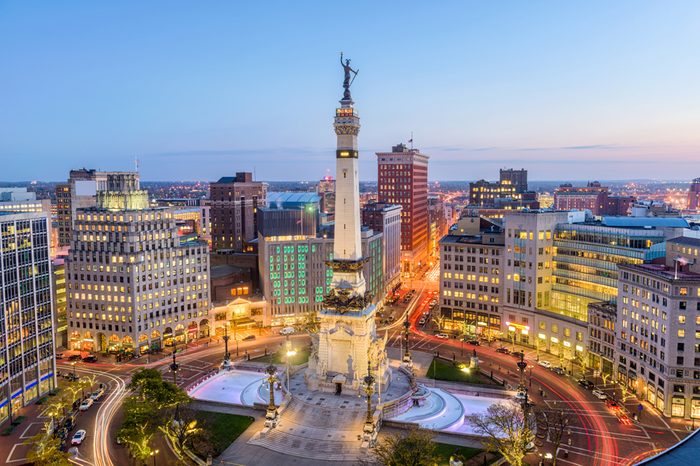
Indiana: An identity crisis
No one would blame Indiana for having an identity crisis back in its early days. First, it was ruled by the French. When the English took over from the French, the territory became a county of Virginia before being separated into the Northwest Territory. By the early 19th century, Indiana had its own geographical boundaries and a name (named after the “Indians” from whom the land was acquired)—which it shared with Michigan until 1805 and Illinois until 1809.
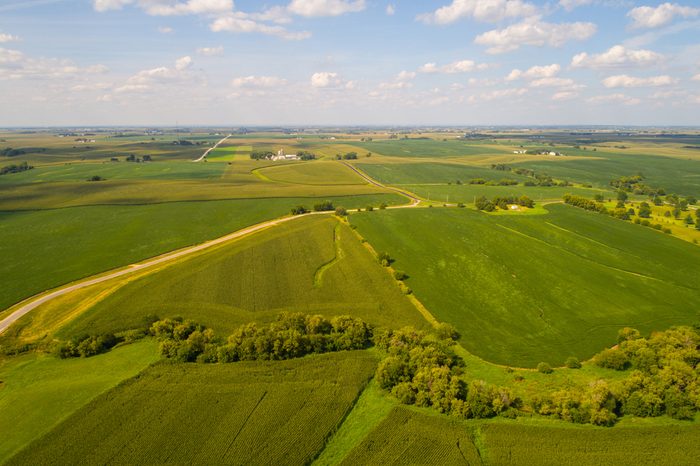
Iowa: The beautiful land
Iowa takes its name from the tribe of Native Americans who lived in the area (the Ayuxwa, or the English spelling: Ioways). The name is believed to mean, “one who puts to sleep.” Iowa‘s first recorded use was by Lieutenant Albert M. Lea, who had ventured across it on a mission in 1835 (when it was still part of the Wisconsin Territory) and later wrote about it in a book he published in 1836.
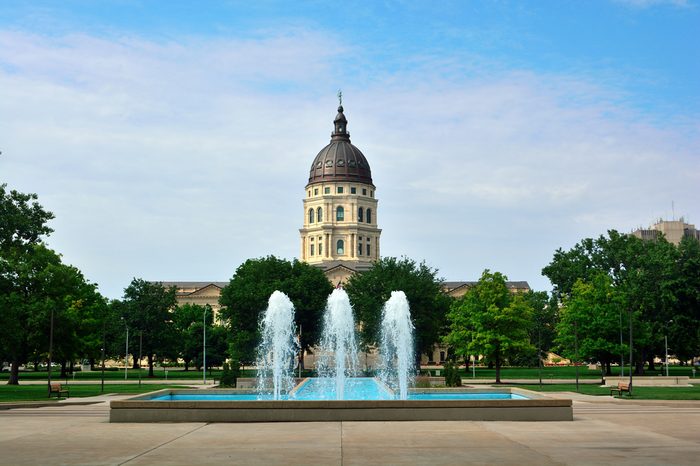
Kansas: A south wind blows
Kansas takes its name from the Kansa tribe that lived in the area; the name loosely translates to “people of the South Wind.” The first recorded use of the name was by French explorers, who first explored the land in 1812. One explorer wrote the name Kansas on a map and after that, it just stuck. Think you know your geography? Test your memory with this geography quiz.
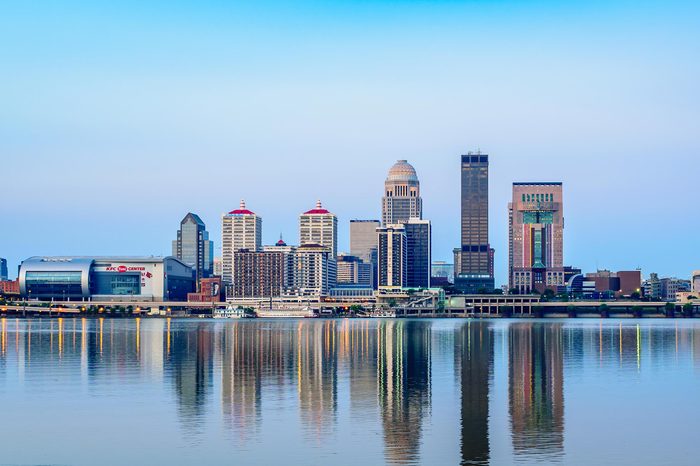
Kentucky: Plain prairie
Some experts believe the name comes from the Wyandot tribal name for “plain,” in reference to the central plains of the state. Other historians say it comes from the Iroquoian word meaning, “prairie.” Some say the name means “dark and bloody ground.” See if you can guess which American president was born in Kentucky.
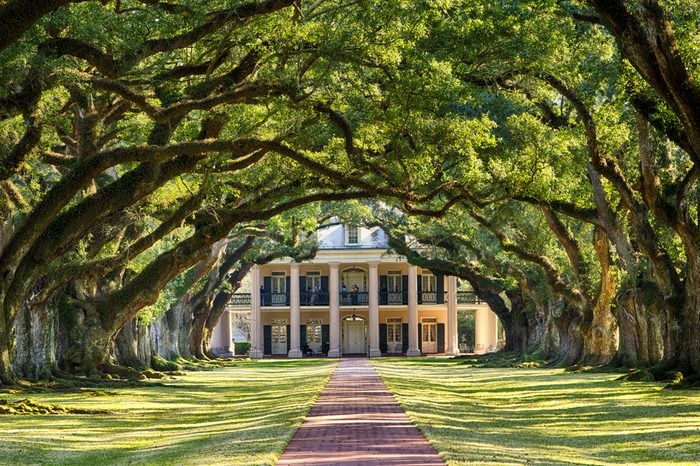
Louisiana: Name fit for a French king
Dubbed in 1862 by the same French explorer who later named Illinois, Louisiana honors King Louis XIV of France. The land was claimed by France until 1803 when Thomas Jefferson purchased as part of the Louisiana Purchase. Believe it or not, the purchase was supposed to be memorialized on Mt. Rushmore.
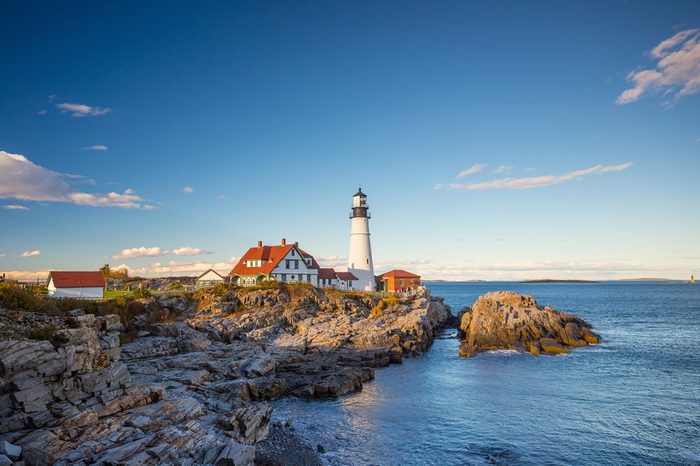
Maine: The story we’re sticking with
The first record of Maine being called “Maine” was dated August 10, 1622, and comes from English Royal Navy veterans Sir Ferdinando Gorges and Captain John Mason. Historians believe they called the territory Maine to distinguish it from all the islands off the coast. Of course, the area was first discovered by the French. To settle the matter, the Maine legislature adopted a resolution in 2001 stating that “Maine” was named after the French province by the same name.
Maryland: Queen Mary
Maryland is named for a French-born queen of England: King Charles’ wife, Queen Henrietta Maria (a.k.a., Queen Mary). When King Charles gave Lord Baltimore a charter in 1632 to establish the new colony, he included the stipulation that it be named in his wife’s honor.
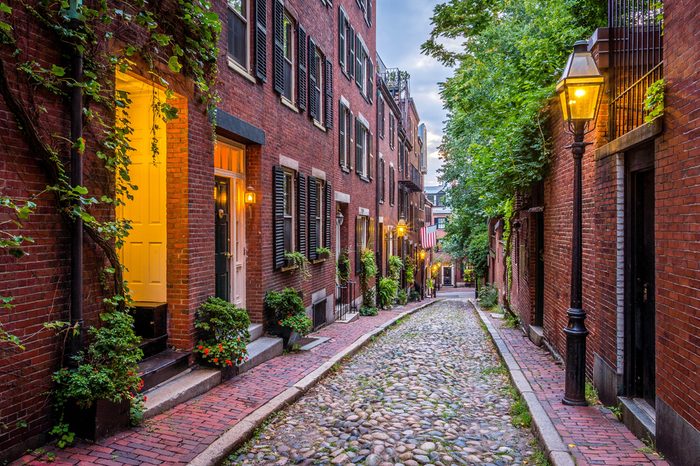
Massachusetts: Great hill
This New England state was named after the Massachusetts Indians who lived in the region, the name loosely translates to “at the great hill.” The name was first recorded in by Captain John Smith, who visited the area in 1614, in his book, A Description of New England. Smith also gave New England its name. When you’re in Massachusetts, don’t forget to check out the New England Trail, one of America’s most stunning hiking trails.
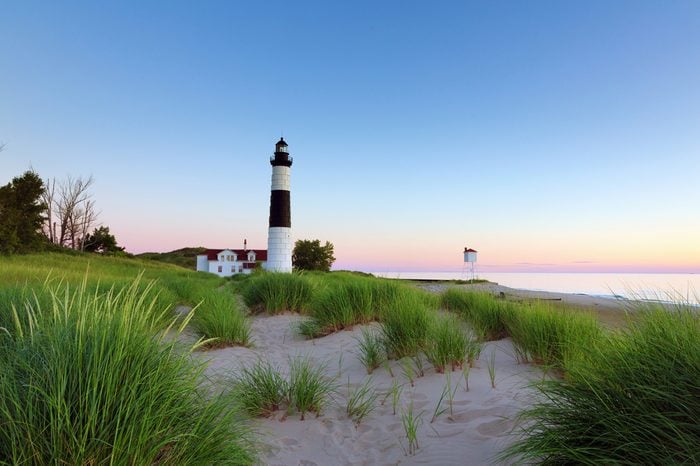
Michigan: Large water
The name comes from the Chippewa word “michigama” which means “great or large lake.”European explorers named Lake Michigan after the tribe’s word in 1670. Later, the entire state took that name as well.
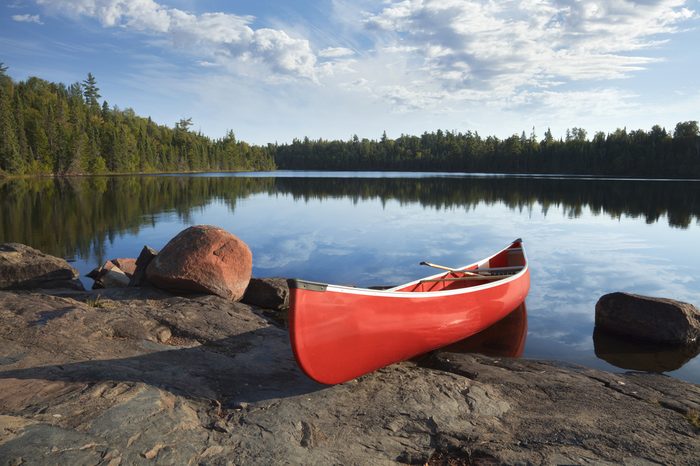
Minnesota: Clouds on the water?
Minnesota’s name comes from the Dakota tribe’s words for “water”—mni—and “clouds”—sota. But whether the water was cloudy, or whether the water was so clear it reflected the clouds in the sky is a mystery we may never solve.
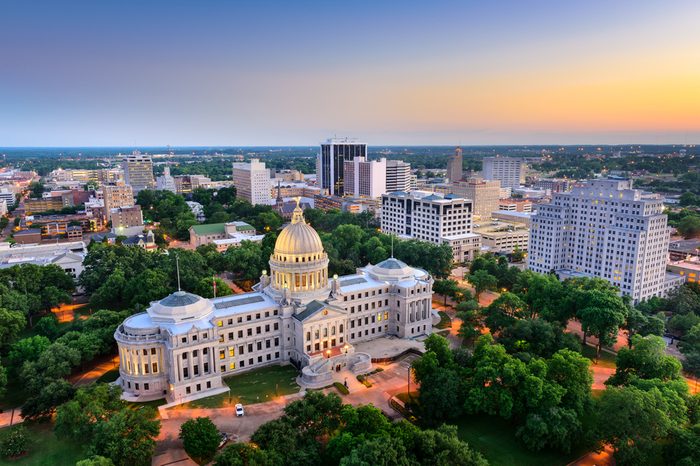
Mississippi: Big river
The name comes from the river, which got its name from the Native American communities that used it for transportation and food. They called it misi sipi, which translates to “big water.” If you’re fond of state trivia, try this state nicknames quiz.
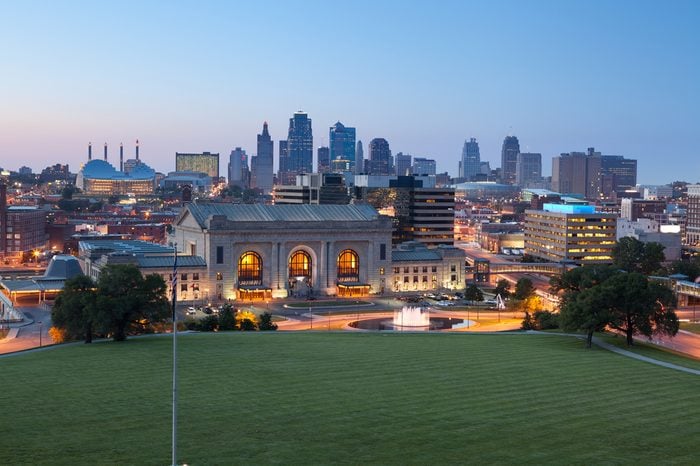
Missouri: Not so muddy after all
The Sioux tribe is the source for the name of Missouri, according to Missouri’s Secretary of State. The word has often been interpreted to mean “muddy water,” but according to the Smithsonian Institution Bureau of American Ethnology, the name means “town of the large canoes.”
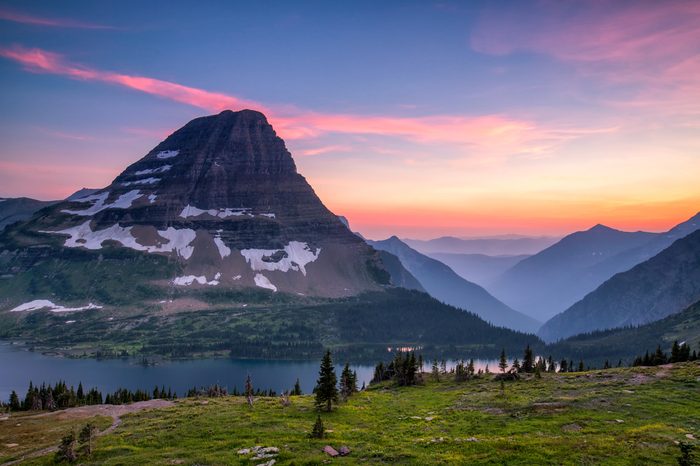
Montana: Mountainous
Montana is the fourth largest state by area (behind Alaska, Texas, and California) but it is also one of the country’s least densely populated states. Its name is derived from the Spanish word montana meaning “mountain,” even though Montana’s average elevation of 3,400 feet makes it the lowest of all the Rocky Mountain States. Don’t miss the U.S. trivia your teacher never told you about.
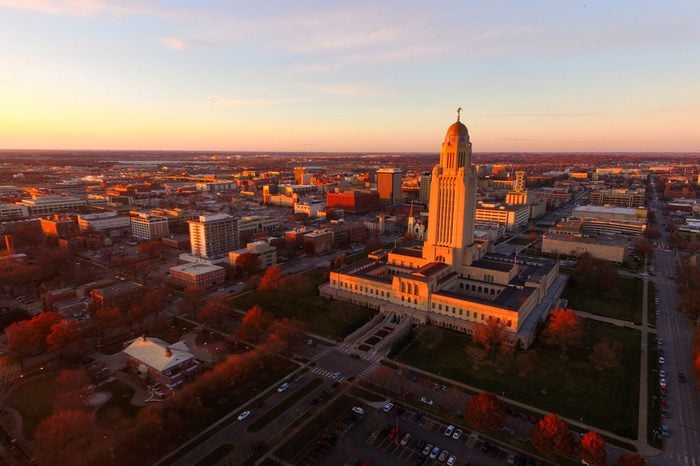
Nebraska: The broad river
The state name of Nebraska is derived from the Native American name for the Platte River, which runs through it (“Nebrathka” meaning “flat water”). The name was first used in writing in 1842 by John Charles Frémont, and it stuck.
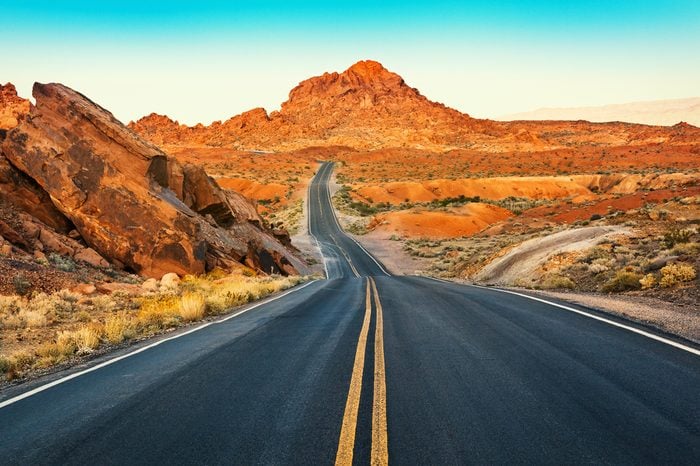
Nevada: Snowy range
Nevada was named for the nearby mountain range—mostly in California—called the Sierra Nevadas. The name comes from the Spanish settlers who marveled at the snowy peaks (nevada translates to “snow-covered”). In 1859, Congress shortened the name of the territory (that became the state) to Nevada. Note: Nevadans prefer to pronounce the state’s name with the flat “a” like the one in “trap” even though the name’s derived from the Spanish, which means the “a” would sound like the one in “palm.” Here are the most difficult to pronounce towns in every state.
New Hampshire: Live free or die
Named by Captain John Mason after Hampshire county in England, the state was the ninth state to ratify the U.S. Constitution and the first state to have its own constitution. Its spirit of independence is epitomized in the state motto—”Live Free or Die.” It plays an important role in national elections, as it is the first state to hold national primaries, and its primary results are thought to influence those in the rest of the nation, giving rise to the saying “As New Hampshire goes, so goes the nation.”
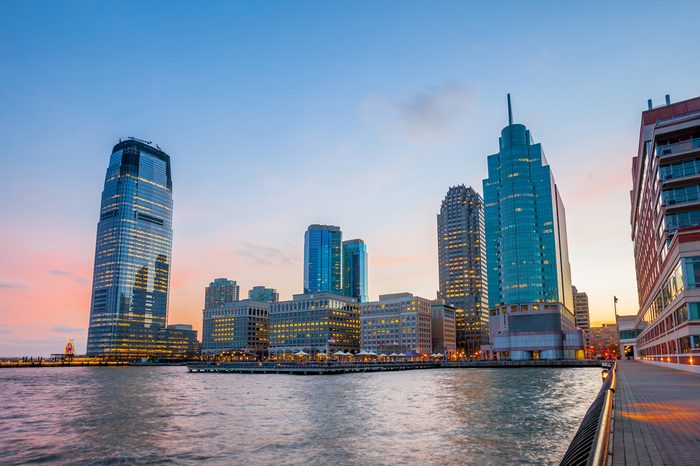
New Jersey: Two namesakes in one
The name comes from the English Channel island of Jersey in honor of Sir George Carteret (one of the two men to whom the land of New Jersey was originally given). And Sir Carteret? He’s the namesake of the township called Carteret—in New Jersey. Although the state is known for its industry, its “Garden State” nickname is well-deserved: New Jersey is a leading producer of cranberries, blueberries, and tomatoes.
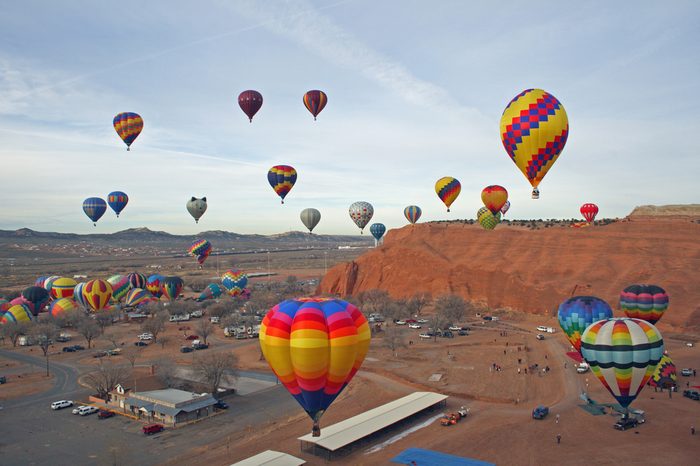
New Mexico: An Aztec god
New Mexico was the name the Spanish used for lands north of the Rio Grande. Mexico refers to an Aztec god, Mexitli. The name New Mexico was given to the land ceded to the United States by Mexico after the Mexican-American War.
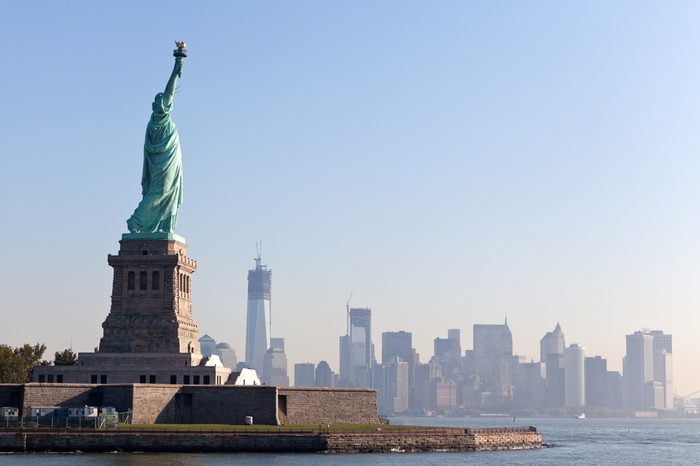
New York: The big orange?
In 1624, the Dutch arrived in the land that’s now New York and called it New Amsterdam (after Holland’s biggest city). By 1664, New Amsterdam fell into the hands of the British, who renamed it New York in honor of the Duke of York. In 1673, the Dutch regained control of New York and rechristened it New Orange, its official name for about a year—at which point it was permanently ceded to the British under the Treaty of Westminster, and it went back to being New York.
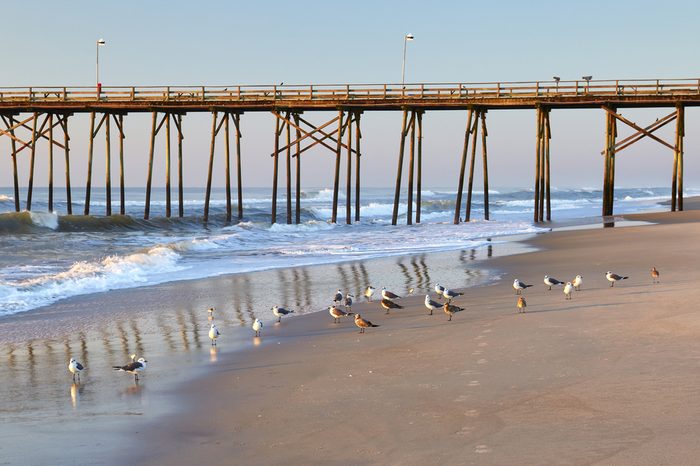
North Carolina: Charles in charge
North and South Carolina were part of one colony until 1729 when the Province of Carolina was split. In 1629, King Charles I granted the territory to Sir Robert Heath; he named it Carolina. This word is derived from the name Carolus, translated as “Charles.” King Charles II, who granted another charter that expanded the Province, also was honored by the name. Here are the geography mistakes we’re all guilty of making.
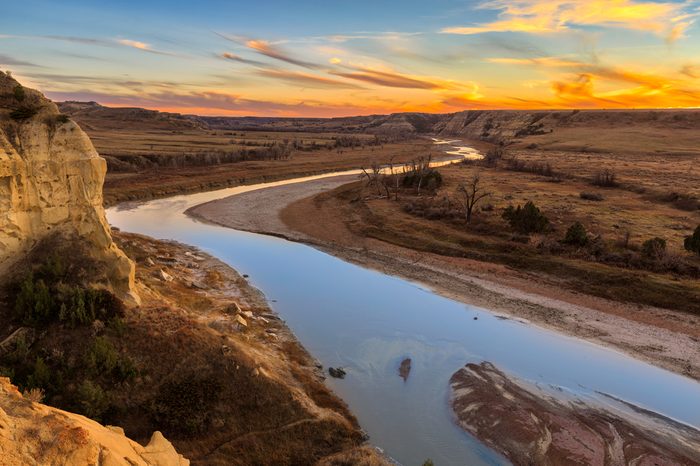
North Dakota: A name change?
The land that is now North Dakota was acquired from the French as part of the Louisiana Purchase. The “Dakota Territory” was formed in 1861 and included what is now North and South Dakota, as well as Montana and Wyoming. Dakota comes from a Sioux tribe from the region, and translates to “friend.” In 1889, the Dakotas were admitted into the Union as states (Montana also became a state in 1889; Wyoming followed in 1890).
Ohio: Another great river
According to History.com, Ohio got its name from the Iroquois word, “O-Y-O,” which means “great river.” The nickname, the “Buckeye State,” refers to the local buckeye tree, whose fruit was believed by early native Americans to bear a striking resemblance to the eye of male deer.
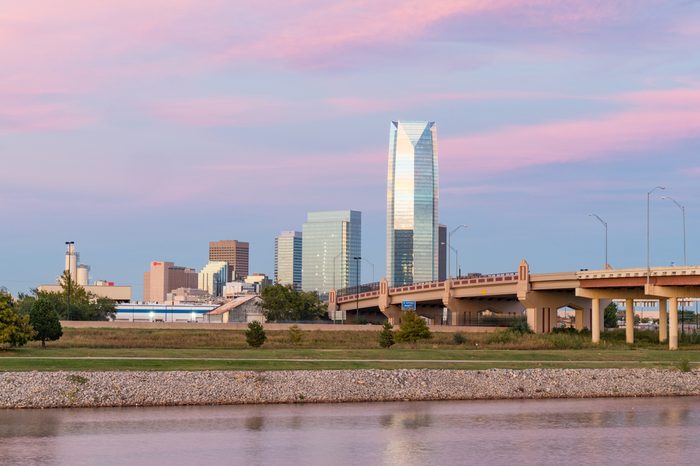
Oklahoma: kind of like Indiana
“Okla humma” was a phrase in the Choctaw language that described the skin-color of Native Americans as a whole. Okla means “people” and humma means “red.” In 1890, two years after the area was opened to white settlers, the anglicized version of the name was approved for the territory.
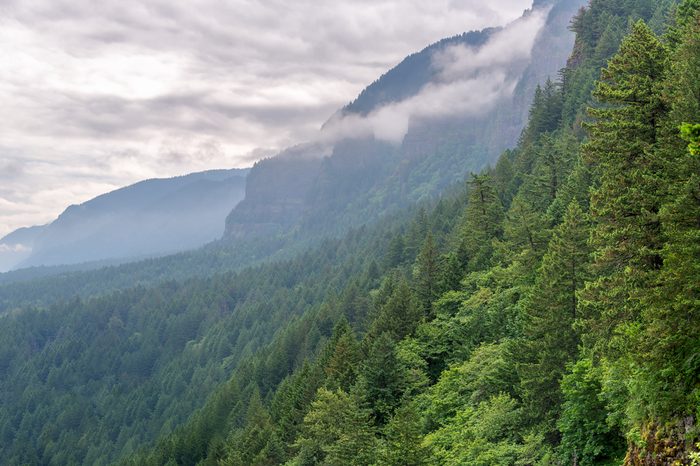
Oregon: Big storm, big ears, or… oregano?
The first use of Oregon seems to date back to 1778 and refers to the local river—now called the Columbia. There are numerous theories as to the origins of the state’s name—not to mention how it’s pronounced: Ore-gun? Or the locals’ preferred three-syllable OR-a-gun? The naming theories include:
- The name comes from the Quebecois word ouragn, which sounds close to the way Oregon residents pronounce their state’s name. It means “hurricane” and may refer to the weather conditions faced by Canadian fur trappers.
- The name comes from the Spanish word orégano for the wild sage that’s indigenous (and grows like a weed) in parts of Oregon.
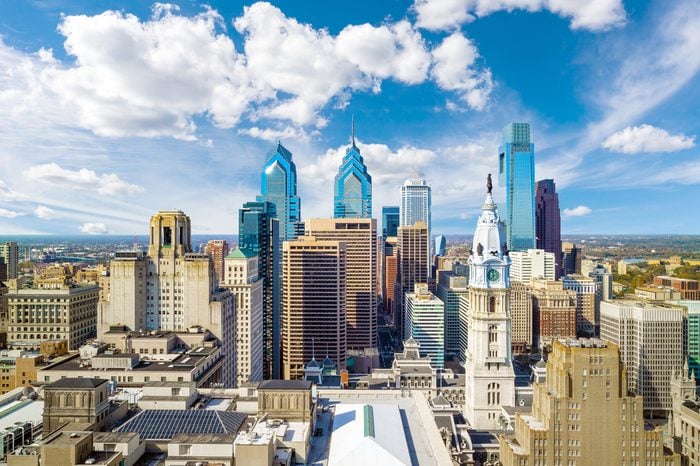
Pennsylvania: Bold Quaker
In 1681, England’s King Charles II (the same one who chartered Maryland in 1832), gave William Penn, a Quaker, the right to settle there. The King didn’t specify that the settlement should have any particular name, so Penn named it “Pennsylvania,” after his father, Admiral Sir William Penn. Or himself, depending on how you look at it.
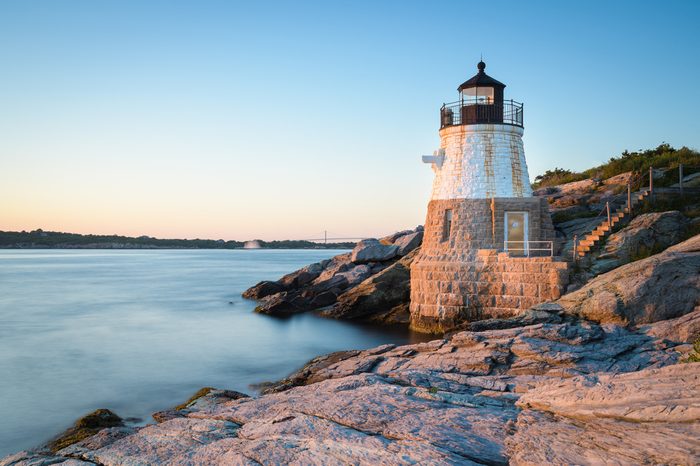
Rhode Island: An island in a far-flung sea
The first mention of the name can be found in a letter from 1524 from the explorer Giovanni da Verrazzano: He refers to an island near the mouth of Narragansett Bay that looks like the Isle of Rhodes in the Aegean Sea. “Rhode Island” stuck as the informal name until it was adopted as the official colony name in 1663.
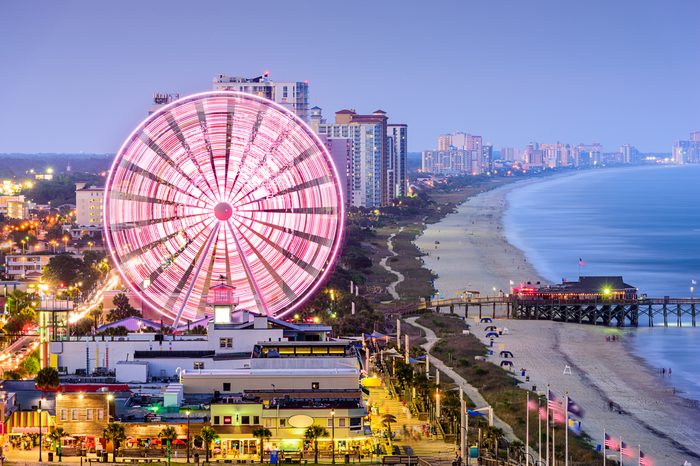
South Carolina: Golf galore
South Carolina has the same origin story as North Carolina, but its own unique topography and history. It’s home to more than 350 golf courses and had a relationship to the game of golf since as early as 1743 when the city of Charleston welcomed a shipment of golf balls and clubs from Scotland.
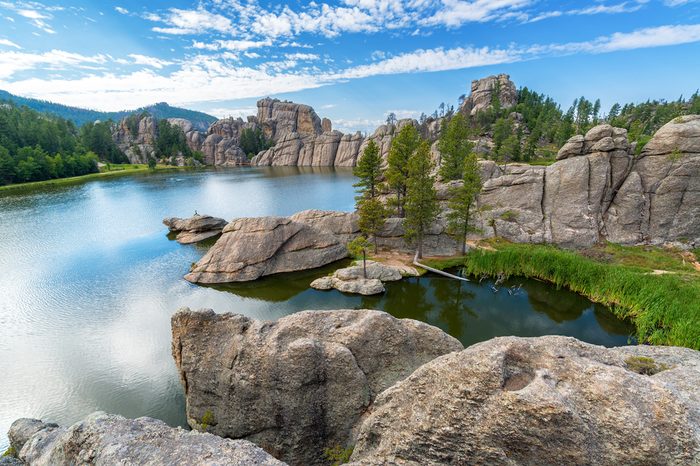
South Dakota: The original?
The origins of South Dakota’s name are the same as that of North Dakota. But just a year after the Louisiana Purchase, Fort Pierre was established by the Lewis and Clark expedition as South Dakota’s first permanent American settlement. Fun fact: South Dakota was admitted to the Union just moments before North Dakota, but that decision was entirely random. President Benjamin Harrison just shuffled the bills for both of the Dakotas and signed one at random.
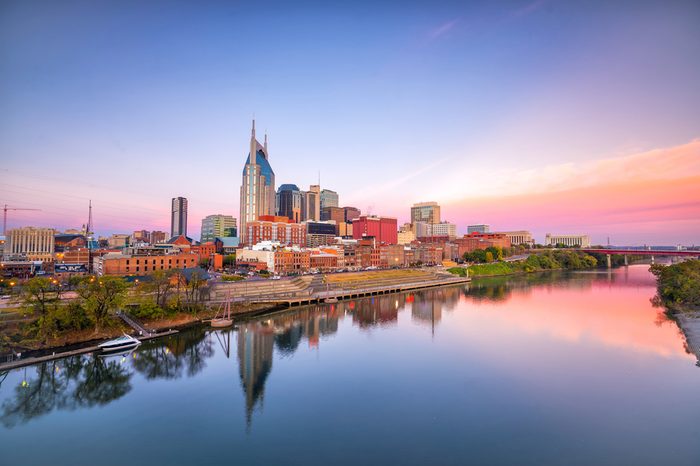
Tennessee: The one with many spellings
Parts of Tennessee were almost included in a 14th colony that would have been known as “Transylvania.” Otherwise, details for the origin of “Tennessee” have been lost over time, but Spanish explorer Captain Juan Pardo was the first to record the name in 1567. As the story goes, he and his soldiers had encountered a native American village called “Tanasqui.” Many, many spellings were tried out, but the first record of one that stuck is in an official correspondence from the Governor of South Carolina in the 1750’s. Tennessee became a state in 1796. These are other states that were almost a part of the United States.
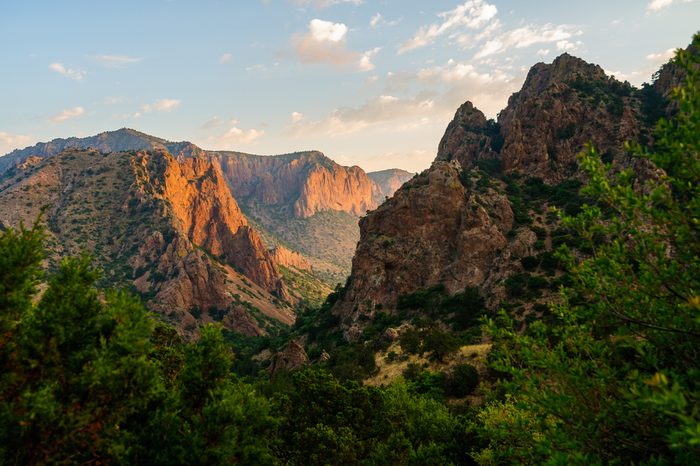
Texas: Hello friend
Texas comes from the word teysha meaning “hello friend” in the language of the Caddo tribe. Spanish explorers and settlers used this word in the 16th century to refer to the friendly tribes throughout Louisiana, Oklahoma, and Texas. The first recorded use predates 1689 when the area was referred to as “the great kingdom of Texas” by a Spanish explorer. Although the reference, itself, created a debate (about whether anyone should be calling the land a kingdom or calling it a word that’s merely a greeting), but it stuck.
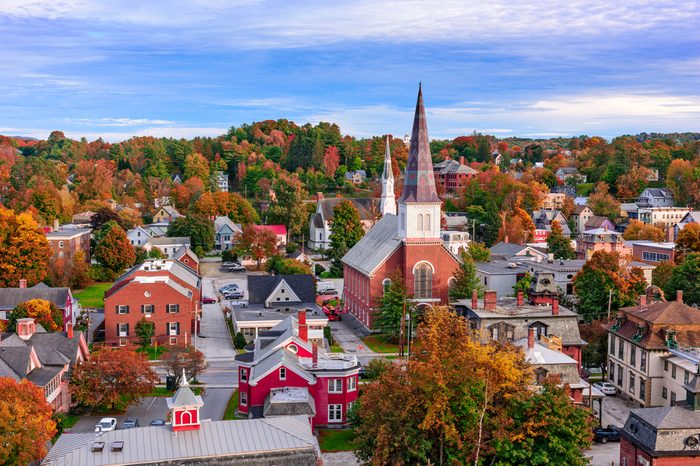
Vermont: Green mountains
“Vermont” is a portmanteau of sorts from the French words for “green” and “mountain”—verd and mont. (Vermont is the Green Mountain State, after all.) The French explorer, Samuel de Champlain first recorded the name on a map in 1647. Thinking of where you want to retire? Don’t forget to check out Burlington, as well as these other amazing places to retire around the world.
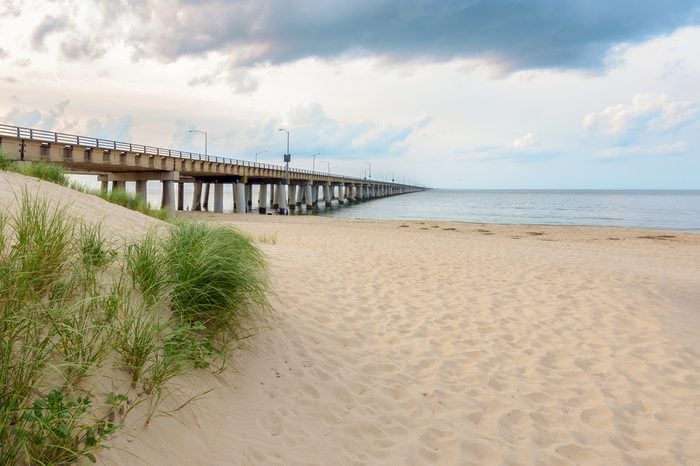
Virginia: The first colony and the first one named for a woman
Virginia was named for Queen Elizabeth I of England, also known as the Virgin Queen. It’s thought that Sir Walter Raleigh suggested the name to the Queen in 1584 when she gave Raleigh permission to colonize the land.
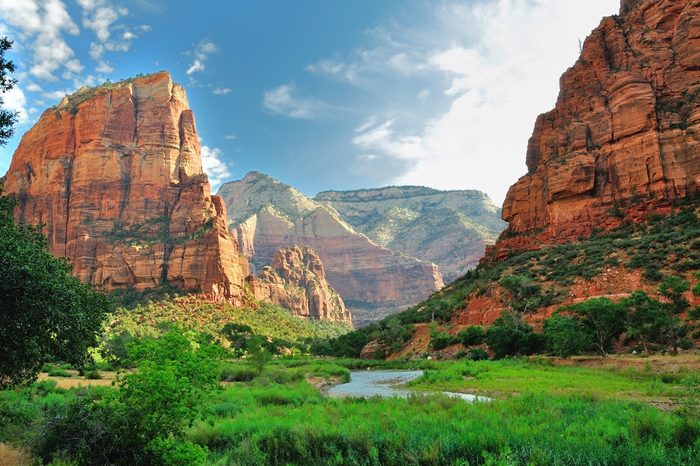
Utah: People of the mountains
Mountains, high plateaus, and deserts distinguish Utah’s topography. When Spanish settlers arrived in the area in the late 16th century, they noticed that some of the native tribes lived in the mountains, while some lived in the valleys. The Apache word, yuttahih refers to either “high places” or “people who live in high places.” It stuck with the settlers, who referred to the natives who lived in the mountains as the Ute people (the Utes are a native American tribe living primarily in Utah to this day) and the land as Utah.
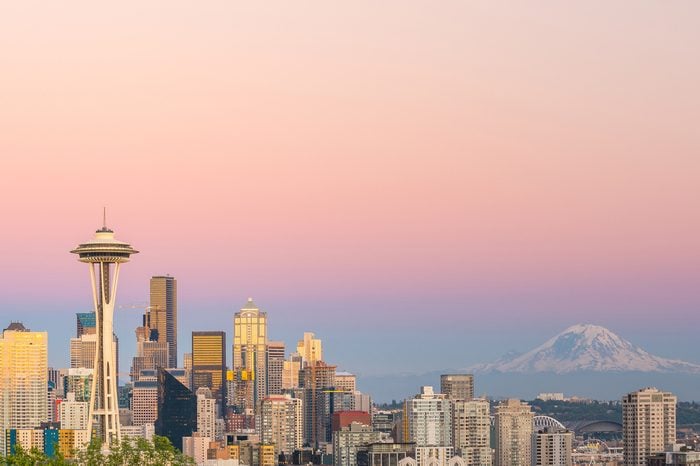
Washington: This one’s easy
Yep: Both Washington State (and Washington D.C.) are named for the first president of the United States. Granted statehood in 1889, Washington is the only state named after a president. Now that you know he has a state named after him, here are more facts about George Washington your teachers never taught you in school.
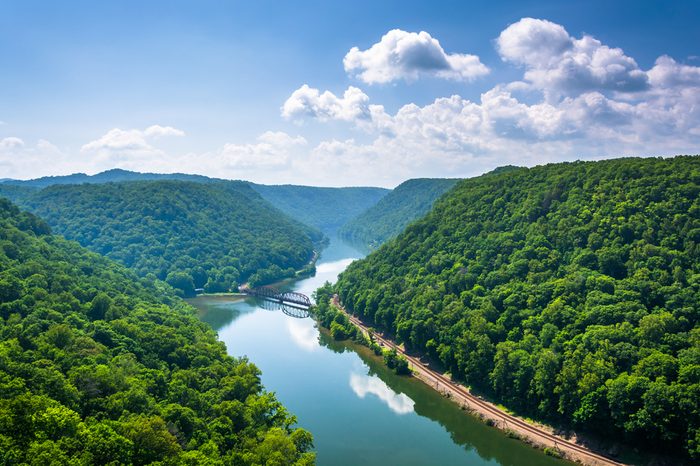
West Virginia: Separated, but keeping the name
When West Virginia withdrew from Virginia in 1861 because it didn’t agree with Virginia’s seceding from the Union, it considered the names, “Kanawha,” “Vandalia,” “Augusta,” “Allegheny,” “New Virginia,” and “Western Virginia.” But despite their political disagreement with Virginia, residents in the western half of the state still retained a fondness for the name.
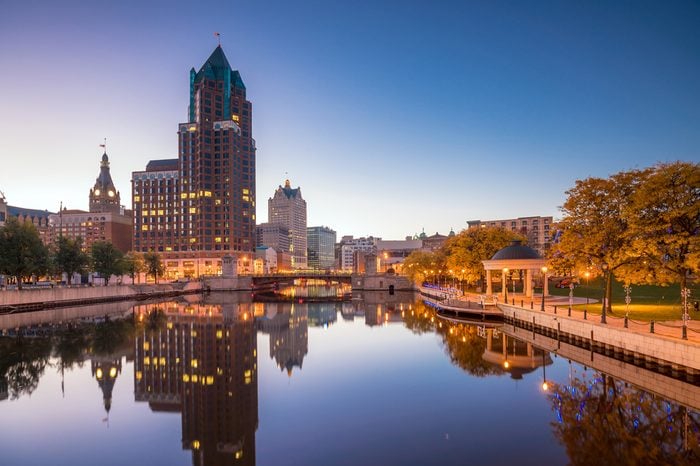
Wisconsin: The stream meandering through the red bluffs
Wisconsin was originally “Meskonsing,” which is the Native American name for the river (now called Wisconsin as well) that runs 430 miles through the state. The English eventually changed the spelling to “Wisconsin,” because that’s what the Indian word sounded like to them. “Recent scholarship has concluded that the word actually means, ‘this stream meanders through something red,'” according to WisconsinHistory.org and that the “something red” is Wisconsin’s sandstone bluffs (the Wisconsin Dells).
Wyoming: A state of indecision
Depending on who you talk to, the word Wyoming means either “large plains,” “mountains and valleys alternating,” “at the big river flat,” or “a large prairie place.” What is known for certain is that the name was proposed by Ohio Congressman James M. Ashley in 1865, although he later questioned his decision to support creating a congressional district out of the incredibly arid land. Wyoming became a territory in 1868 and a state in 1890. If you can’t get enough of state history, don’t miss these 50 facts about the 50 states.

